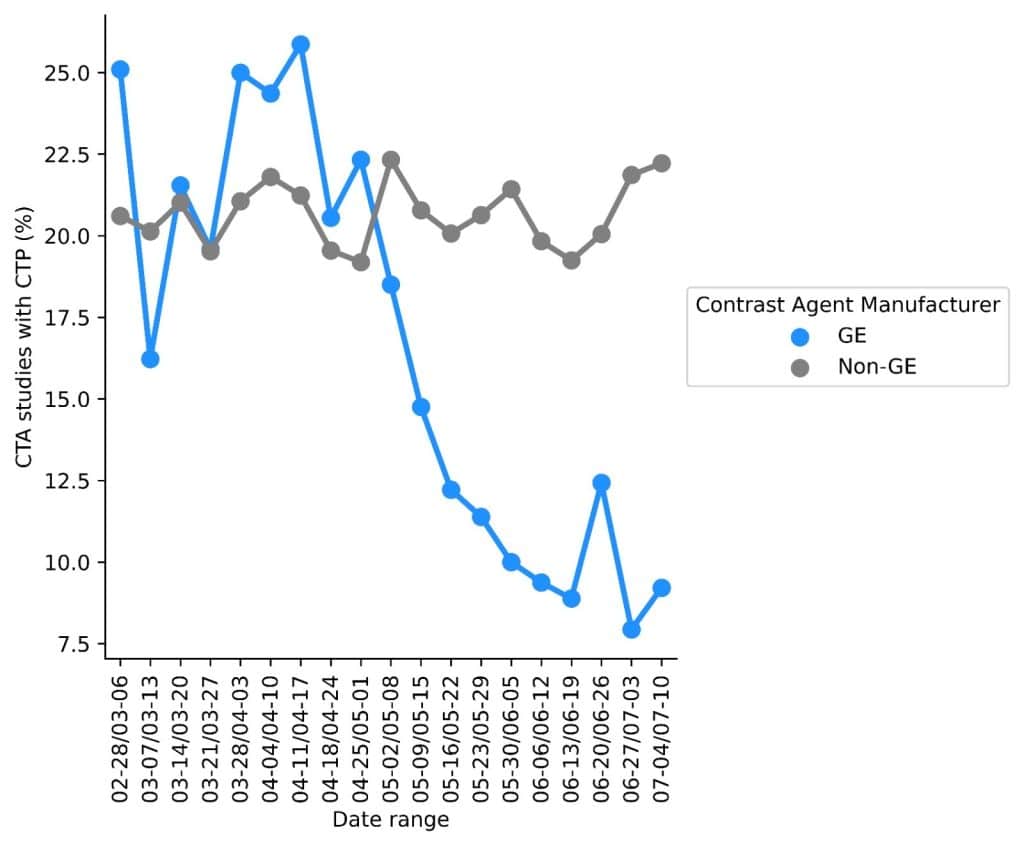Team Viz
Jul 13, 2022
5 min

Explore imaging trends in the acute stroke setting across 1000 hospitals in the US to understand the impact of the contrast shortage.
In early May, the FDA announced a shortage of GE’s intravenous contrast media products used in many imaging scans due to a COVID-19-related temporary shutdown at GE’s production facility in Shanghai, China. This global shortage has created a national crisis for radiology departments to provide the best care to patients needing these exams.
While this shortage was predicted to last until the end of May there are still shortages being experienced across the country and as of now, the Shanghai facility returned to 25% production capacity and they’ve moved some production to a plant in Cork, Ireland. GE supplies about 50% of all the contrast used in US hospitals and this shortage has affected many hospitals and patient care decisions. Some hospitals have resorted to deferring nonurgent exams and opting for other imaging and diagnostic modalities that do not require contrast media.
This shortage has also affected our Viz customers. In some instances our customers have resorted to doing the CTA Head and Neck to rule out a large vessel occlusion and only if it is positive they then make the decision to do the CT perfusion.
With all of this, it’s hard to quantify the national-level impact this is having. So, how is the contrast shortage changing acute stroke imaging decisions?
We worked with Ameer Hassan and Adnan Qureshi, partners and users of Viz.ai, to leverage Viz.ai’s access to imaging data from over 1000 hospitals across the US to explore the impact on imaging trends in the acute stroke setting. The results are astounding – hospitals that use GE’s Intravenous contrast media show a drop of ~20% and ~60% in the number of CTA and CTP studies performed, respectively.

The percentage of patients receiving CTP after CTA has also fallen dramatically, suggesting the contrast shortage clearly changed clinical management decisions. How can institutions be prepared for supply chain crises?
Resources
- Information and recommendations from the ACR Committee on Drugs and Contrast Media
- Navigating supply chain disruptions of iodinated contrast agent for neuroimaging
- Strategies to conserve iodinated intravascular contrast media for CT
